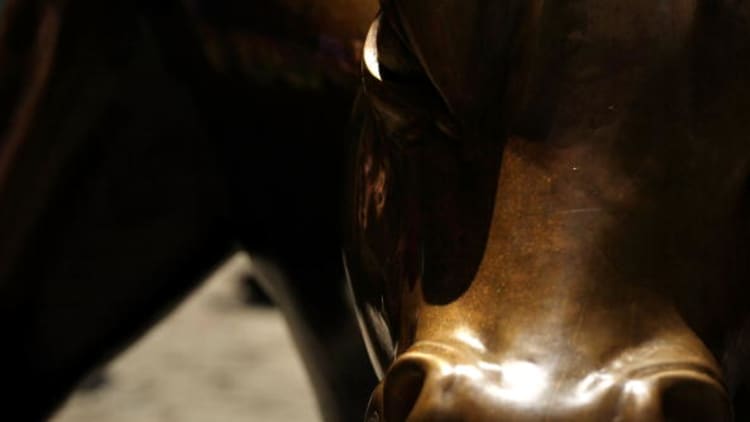
Investors are getting more comfortable with the idea of four interest rate hikes this year, though it may not last long.
A steeper rate incline likely will come with increased inflation pressures that in turn could serve as a millstone for a market struggling to post meaningful gains even amid blockbuster corporate earnings.
Think in terms of higher consumer and producer price readings coupled with surging oil prices and a falling dollar, all combining to form a landscape that investors haven't seen in decades.
"If all that happens to make a fourth hike necessary, I'm not sure the market will be as comfortable as you see at the moment," said Jim Paulsen, chief investment strategist at the Leuthold Group. "It's the movement around it that shifts around your feet and makes the environment a lot more hostile."
Following a series of readings showing that inflation is edging toward the Federal Reserve's 2 percent target level, traders who make bets on where the central bank is going to put its benchmark rate have indicated more hawkish expectations. As of early afternoon trading Monday, the possibility of a fourth rate hike this year — the Fed already approved one in March — was about 47 percent after reading just below 50 percent earlier in the session.
Optimists have held onto the hope that even if the Fed moves more aggressively, it will be doing so for the right reasons. That would mean strong economic growth accompanied by just a dose of inflation that would push wages higher and increase quality of life without an outsized rise in prices.
The other side is the bleak scenario, where long-dormant inflation rises and the Fed finds itself behind the curve after years of loose monetary policy. The central bank then has to move more quickly than the market anticipates, putting pressure on both stock and bond prices, which move inversely to yields.
Paulsen has been more in the latter camp, even warning that a moderate bout of 1970s-era "stagflation," or low growth and high inflation, could be on the way.
"The collateral damage around that is going to be much more brutal than what people are currently thinking," he said. "I don't think the Fed's thinking we're getting runaway real growth. They see the inflation evidence and are thinking it could get worse."
The U.S. economy grew at a 2.3 percent pace in the first quarter, more than expected but still around the tepid post-recession level.
Fed policymakers had long insisted they were "data dependent" in their decision-making, but the most recent trajectory has looked more like a predetermined path toward normalization from the extreme accommodation that began in late 2008.
Amid this environment, investors will be looking for clues about not only how many times the Fed will be hiking, but also why.
The Federal Open Market Committee begins its two-day meeting Tuesday, with the market not expecting any change in rates but anticipating some shifts in language from the post-meeting statement that will indicate a more aggressive road ahead.
"It really depends on whether it's perceived that the Fed is ahead of the curve a little bit," said David Donabedian, chief investment officer at CIBC Atlantic Trust. "In other words, are they responding to a tiny acceleration in the inflation numbers or really reacting to rising confidence in the strength of the expansion."
"If the fourth rate hike is viewed in that context, it's not much of a problem for the market," Donabedian added. "If the inflation number starts to accelerate further it becomes more of a problem. Then the psychology becomes, uh-oh, maybe four isn't enough."
Traders actually are pricing in a 7.5 percent chance of a fifth hike this year — minimal, but not zero. The Fed's job actually has gotten a bit easier in recent days, as the bond market has pushed yields higher on its own. Central bank policymakers, then, will be reacting as much to market dynamics as their own judgments.
Donabedian said he'll be watching Friday's nonfarm payrolls report closely for average hourly earnings growth. Should that point to aggressively higher wage pressures, it would suggest a more aggressive Fed and could pressure stock and bond prices, he said.
Forecasters at Capital Economics were one of the first to predict a fourth rate hike, and they see the case only getting stronger in recent days.
"Despite economic activity slowing in Q1, we expect the Fed to press on with three more rate hikes this year, not least because inflation has been higher than anticipated in recent months," Andrew Kenningham, Capital's chief global economist, said in a note.
Kenningham figures the post-meeting statement will refer to "a steady rise in interest rates over the coming year or two" and an acknowledgment that "inflation has been higher than expected."
WATCH: Fed rhetoric grown more hawkish in last month



